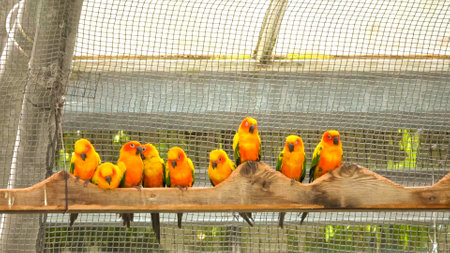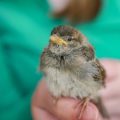Understanding Pet Bird Behaviour in the UK
When it comes to training and socialising pet birds in Britain, understanding their behaviour is the essential first step. British homes commonly welcome species such as budgerigars, cockatiels, African greys, and lovebirds. Each of these birds comes with unique personalities and needs that are influenced not only by their species, but also by the local climate and typical UK living environments.
Popular Pet Birds in Britain: Behaviour and Personality Traits
| Species | Typical Behaviour | Personality | Special Needs |
|---|---|---|---|
| Budgerigar (Budgie) | Playful, vocal, active | Sociable, curious, can be cheeky | Needs mental stimulation and regular interaction |
| Cockatiel | Gentle, whistling, enjoys head scratches | Affectionate, calm, easily tamed | Loves routine and gentle handling |
| African Grey Parrot | Highly intelligent, talkative, sensitive to changes | Clever, cautious, forms close bonds with owners | Requires challenging toys and stable environment |
| Lovebird | Lively, enjoys companionship (bird or human) | Loyal, can be territorial if not socialised early | Benefits from pair keeping and daily social time |
The Impact of the UK Climate and Home Environment on Birds
The UKs temperate climate means that most pet birds are kept indoors for their safety and comfort. Central heating during winter can dry the air, so providing humidity through misting or a water dish is important. Daylight hours change significantly between seasons; using full-spectrum lighting helps maintain your bird’s natural rhythms. Additionally, British homes often have small gardens or patios—safe supervised outdoor time can be enriching for your bird when weather permits.
Key Factors Influencing Behaviour in UK Homes:
- Space: Urban flats may limit flight opportunities—provide larger cages and out-of-cage exercise time.
- Noisy Environments: Birds may become stressed by nearby traffic or loud neighbours; create a calm corner for your pet.
- Temperature Fluctuations: Avoid placing cages near draughts or direct heat sources.
- Boredom Prevention: Rotate toys regularly and use foraging activities to keep your bird mentally stimulated.
Understanding these factors will help you adapt your training techniques and build a stronger bond with your feathered companion in the unique context of British life.
2. Essential Training Principles for British Bird Owners
Effective bird training in the UK requires a blend of practical methods and an understanding of local lifestyles. As many British homes vary in size, and daily routines often include work commutes or busy schedules, it is crucial to use training techniques that fit seamlessly into these environments. Here, we introduce positive reinforcement strategies specifically adapted for British pet owners.
Positive Reinforcement: The Foundation
Positive reinforcement is the cornerstone of successful bird training. This method rewards desirable behaviour with treats, praise, or favourite toys, which encourages your bird to repeat these actions. For British households where space may be limited, small, healthy treats such as millet sprays or sunflower seeds are ideal incentives.
Key Training Techniques for UK Settings
| Technique | Description | How It Fits UK Homes |
|---|---|---|
| Target Training | Teaching your bird to touch a stick or finger on command | Requires minimal space; ideal for flats and terraced houses |
| Recall Training | Training your bird to fly or walk to you when called | Can be practised indoors safely, even in smaller rooms |
| Step-Up Command | Encouraging your bird to step onto your hand or perch | Practical for handling birds during vet visits or cleaning cages in British climates |
Tailoring Sessions to Your Lifestyle
Short, frequent sessions are best—5-10 minutes at a time fits easily around the typical UK workday or school run. Consistency is key; try linking training times with regular activities like morning tea or after dinner. This helps your bird anticipate and enjoy these learning moments.
Top Tips for Success in British Homes:
- Choose a quiet room away from distractions such as televisions or outside noise.
- If you live in shared housing or with family, inform others about training times to minimise interruptions.
- Dull winter days? Use energy-efficient lamps to keep training areas well-lit and inviting.
By integrating these essential training principles with an awareness of UK living conditions, you will foster a happy, confident pet bird ready to thrive in any British home environment.
![]()
3. Building Trust and Bonding with Your Bird
Establishing trust is the cornerstone of a harmonious relationship between you and your pet bird, especially within UK households where environmental factors such as weather, daylight hours, and daily routines can influence your bird’s sense of security. British homes often experience fluctuating temperatures and noise levels, making it essential to create a calm and predictable atmosphere for your feathered companion.
Understanding Your Bird’s Body Language
Before attempting hands-on interaction, observe your bird’s body language to gauge their comfort level. Understanding subtle cues—like feather ruffling, beak grinding, or wing stretching—can help you avoid overstimulation or fear responses. Here’s a quick reference guide tailored for common pet birds in the UK:
| Behaviour | Meaning | Action |
|---|---|---|
| Puffed feathers | Relaxed or content | Approach slowly; offer gentle talk |
| Pinned eyes | Excitement or agitation | Monitor carefully; avoid sudden moves |
| Open beak/hissing | Fear or threat display | Step back; give space and time |
| Head bobbing/wing flapping | Seeking attention or play | Engage positively with toys or treats |
Effective Methods for Building Trust
- Consistency in Routine: Birds thrive on predictability. Feed, clean, and interact at similar times each day to mirror the structured schedules common in UK lifestyles.
- Positive Reinforcement: Use healthy treats typical in Britain—such as chopped apples (seedless) or millet sprays—to reward calm behaviour. Always praise softly to reinforce trust.
- Gentle Interaction: Start by sitting near the cage while reading aloud in a soothing tone. This helps the bird acclimatise to your presence and the nuances of local accents.
- Hand Training: Once comfortable, offer your finger as a perch inside the cage. Gradually increase handling sessions as confidence grows, always letting the bird set the pace.
- Avoid Overcrowding: British homes may be compact; ensure the bird’s area isn’t too busy or noisy, reducing stress from overstimulation.
The Importance of Patience and Empathy
Building trust with pet birds is not a one-off task but an ongoing process that requires patience and empathy—qualities valued in UK culture. Never force interaction; instead, celebrate small milestones such as accepting treats from your hand or responding to your voice. Over time, these consistent efforts will foster a strong bond and help your bird feel safe and settled within your home environment.
4. Socialising Birds: Safe Introduction to People and Other Pets
Step-by-Step Guide to Socialising Your Pet Bird in a British Home
Proper socialisation is essential for a happy, confident bird that fits seamlessly into your UK household. Here’s a structured approach to gradually introducing your feathered companion to new people, environments, and other pets—always keeping safety and classic British home etiquette in mind.
1. Preparing the Environment
- Designate a Safe Space: Choose a quiet room where your bird feels secure. Avoid areas with draughts or sudden noises, such as near kettles or the telly.
- Remove Hazards: Ensure windows are closed, mirrors are covered, and other pets are kept out initially.
- Familiar Comforts: Place favourite toys and familiar perches within view to provide reassurance.
2. Gradual Introduction to Family Members
- Sit Nearby: Have family members quietly sit close to the cage, speaking softly using calm British greetings like “Hello there” or “Alright, mate?”
- Treat Offering: Allow trusted family members to offer treats through the bars, respecting the bird’s comfort zone.
- Short Sessions: Limit interactions to 5–10 minutes at first, gradually increasing as your bird becomes more relaxed.
3. Meeting Friends and Visitors
- Advance Notice: Let friends know you have a bird; ask them to avoid strong perfumes or loud voices when visiting.
- Polite Greetings: Teach guests traditional British manners—avoid reaching into the cage or making sudden movements.
- Supervised Encounters: Keep all initial meetings short and supervised until trust is established.
4. Introducing Other Pets (Dogs & Cats)
| Step | Description |
|---|---|
| Scent Familiarisation | Allow your dog or cat to sniff an item from the bird’s cage (e.g., a toy) before any face-to-face introduction. |
| Visual Introduction | With your bird safely in its cage, let pets observe from a distance. Reward calm behaviour with treats and praise (“Good boy/girl”). |
| Controlled Proximity | If all remains calm, slowly decrease the distance over several sessions, always under supervision. Never leave pets unattended with your bird. |
| Respect Boundaries | If either animal shows stress (fluffed feathers, hissing, barking), return to an earlier step. |
British Etiquette Tips for Bird Socialisation
- Avoid shouting or playing loud music during introductions—a cup of tea and gentle conversation sets a perfect mood.
- Ask visitors to wash hands before handling birds to prevent germs—a polite habit in UK homes.
- Praise positive interactions quietly; refrain from scolding loudly if things go awry—keep calm and carry on!
The key is patience and consistency. By following these steps and respecting both your bird’s pace and classic British home customs, you’ll foster a well-socialised pet who feels at ease amidst friends, family, and fellow animals alike.
5. Enrichment and Mental Stimulation Using UK Resources
Ensuring your pet bird remains happy and healthy involves more than just feeding and basic care—it’s essential to provide both mental and physical stimulation tailored to the UK environment. Here are practical tips, along with locally available resources, to help your feathered companion thrive.
Local Toys and Foraging Activities
UK pet shops offer a variety of bird-safe toys designed for enrichment. Look for puzzle feeders, shreddable toys made from untreated willow or hazel, and swings or ladders crafted with British hardwoods. Rotating toys regularly keeps birds engaged and prevents boredom.
| Type of Toy | Description | Where to Find in the UK |
|---|---|---|
| Puzzle Feeders | Encourage problem-solving by hiding treats | Pets at Home, John Hopewell Parrot Supplies |
| Shreddable Toys | Made from willow, paper, or seagrass for chewing | Natural Bird Product retailers |
| Swings & Ladders | Promotes exercise and balance using local wood | Independent UK pet stores, online marketplaces |
Natural Materials for Safe Exploration
The UK countryside offers an abundance of safe natural materials for enrichment. Collect (untreated) branches from apple, hazel, or birch trees—always ensure they’re free from pesticides and wash thoroughly before use. Fresh herbs like rosemary or mint can be woven into cage bars for sensory stimulation.
Safe Natural Materials List:
- Apple branches (untreated)
- Bamboo stalks
- Pine cones (baked to remove pests)
- Fresh grass clumps (from pesticide-free lawns)
Outdoor Aviary Time: Making the Most of the UK Climate
If you have space, an outdoor aviary provides invaluable stimulation. In the UK, ensure the aviary is predator-proof and offers shelter from rain and wind. Supervised time outdoors allows birds to experience sunlight (vital for vitamin D synthesis) and natural sounds. Always monitor temperature changes and avoid exposure during extreme cold snaps.
Tips for Outdoor Aviaries in the UK:
- Install windbreaks or covered sections for protection against British weather
- Add native plants such as lavender or buddleia for visual interest
- Avoid placing aviaries near busy roads due to noise pollution
By incorporating these enrichment strategies using local resources, you’ll foster a stimulating environment that supports your bird’s well-being while celebrating what the UK has to offer.
6. Troubleshooting Common Behavioural Issues
Even with the best care and training, pet birds in the UK can develop challenging behaviours such as biting, excessive screaming, or feather plucking. British bird owners may encounter these issues due to environmental factors, socialisation gaps, or miscommunication. Here’s a practical guide to identifying and resolving these common problems using methods suitable for UK homes.
Biting
Biting is often a sign of fear, stress, territoriality, or lack of trust. It’s important not to react aggressively, as this can worsen the behaviour. Instead:
- Observe triggers: Does your bird bite during cage cleaning, hand feeding, or when strangers are present?
- Respect boundaries: Allow the bird space and avoid forcing interaction.
- Positive reinforcement: Reward calm behaviour with a favourite treat (like millet or apple pieces—ensure they’re safe for your species).
Sample Biting Solutions Table
| Trigger | Solution |
|---|---|
| During handling | Use gradual desensitisation and offer treats for accepting touch. |
| Cage aggression | Allow more out-of-cage time and approach calmly from the side. |
Screaming
Loud vocalisations can be typical at dawn and dusk but become problematic if persistent. Consider these steps:
- Avoid reinforcing noise: Do not shout back or rush over; wait for quiet before giving attention.
- Provide enrichment: Offer toys, foraging activities, and rotate items regularly to prevent boredom.
- Maintain routine: Birds in British households benefit from regular feeding and play schedules.
Screaming Troubleshooting Table
| Cause | Recommended Action |
|---|---|
| Lack of stimulation | Add new toys or rearrange perches weekly. |
| Anxiety or loneliness | Increase social interaction; consider background radio (e.g., BBC Radio 4) for companionship. |
Feather Plucking
This distressing behaviour often points to underlying health or emotional issues. In the UK’s variable climate, central heating or drafts can exacerbate dry skin. Steps include:
- Consult an avian vet to rule out medical causes (British Veterinary Association members are recommended).
- Mist feathers lightly with water if humidity is low indoors.
- Increase mental stimulation with puzzle feeders and supervised exploration outside the cage.
Quick Reference: When to Seek Professional Help
- If biting escalates despite positive training techniques.
- If screaming becomes constant and disrupts daily life.
- If you notice bald patches or self-harm during feather plucking.
Remember that patience and consistency are key. By understanding your bird’s needs and responding with appropriate solutions tailored for British home environments, you’ll foster a happier and healthier companion.


